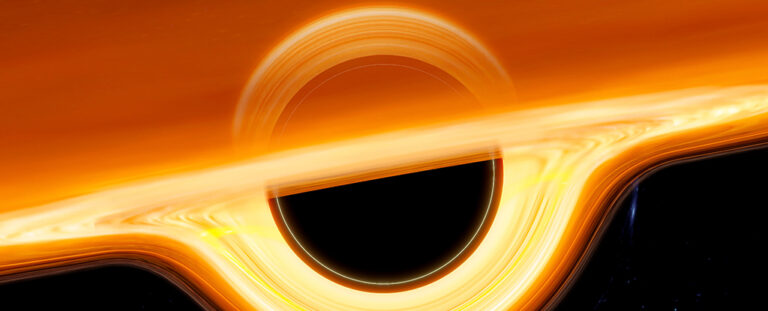Utilizing the Potential of a Theoretical Black Hole Might Result in an Extraordinary Explosive Device.
Black holes possess immense gravitational power, making them formidable forces in the universe. It is logical to assume that there must be a method to harness their energy if given the opportunity, and indeed, there is.

By tapping into the heat and kinetic energy of a black hole’s accretion disk and jets, we can extract a significant amount of energy. However, even in the absence of surrounding matter, it is still possible to extract energy from a black hole using a technique called the Penrose process.
The Penrose process, initially proposed by Roger Penrose in 1971, allows us to extract rotational energy from a black hole. This process takes advantage of a phenomenon called frame dragging, where the rotation of a body causes nearby space to twist, resulting in the slight dragging of objects falling towards the rotating body along its path of rotation.
Although we have observed this effect near Earth, its magnitude is minuscule. However, in the vicinity of a rotating black hole, the effect becomes immensely powerful. Within a specific region known as the ergosphere, objects can be dragged around the black hole at speeds exceeding that of light in free space.
The Penrose process involves entering the ergosphere of a rapidly rotating black hole and releasing a small amount of mass or radiation into it. As a result, you are propelled away from the black hole at a faster speed than when you approached it. The additional energy gained is offset by a decrease in the black hole’s rotation.
In theory, this process has the potential to extract up to 20 percent of the black hole’s mass energy, which is a significant amount. To put it into perspective, the fusion of hydrogen into helium only yields about 1 percent of the mass energy.
However, theoretical physicists are always seeking more. If it is possible to extract 20 percent of the mass energy from a black hole, why not aim for even more?
This question forms the basis of a recent research paper, although it is important to note that the paper focuses on a more abstract concept of a black hole rather than the ones we observe in the Universe.
Simple black holes can be characterized by three properties: mass, rotation, and electric charge. The black holes we observe possess the first two properties, but since matter is electrically neutral, they lack the third. The paper under discussion specifically examines charged black holes.
Furthermore, our Universe is expanding and can be roughly described by a solution to Einstein’s equations known as de Sitter space. This describes an empty universe with a positive cosmological constant. On the other hand, Anti-de Sitter space (AdS) would represent a universe with a negative cosmological constant.
Despite not being applicable to our Universe, AdS offers theoretical possibilities that are favored by mathematicians and physicists. It is frequently utilized to push the boundaries of general relativity. The focus of this particular research paper is on a charged black hole within anti-de Sitter space.
Although this study is purely hypothetical, it presents an intriguing “what-if” scenario. Instead of harnessing energy from the rotation of a black hole, the authors explore the extraction of energy through particle decay using the Bañados-Silk-West (BSW) effect.
By utilizing electromagnetic or physical confinement mirrors, particles can be repeatedly reflected near the event horizon, gaining energy from the black hole until they decay into usable energy.
However, the authors demonstrate that this concept poses a problem. It can result in a runaway effect where particle energy amplifies itself in a feedback loop, leading to what is known as a black hole bomb. Therefore, caution must be exercised when constructing a power plant near a charged black hole in an anti-de Sitter universe.
Interestingly, the authors also examine the scenario of a charged black hole in an otherwise empty anti-de Sitter universe. In this case, energy can still be extracted from the black hole.
Instead of mirrors, the structure of space-time itself would serve as a confinement chamber. Consequently, the charged black hole would naturally release energy. This process is akin to Hawking radiation, but it does not rely on quantum gravity. Furthermore, the authors determine that this scenario does not result in a black hole bomb.
It is important to reiterate that none of these findings are applicable to real black holes in our Universe. As far as our current knowledge goes, the Penrose process remains the most viable option.
However, research of this kind proves valuable due to the insights it provides into the fundamental characteristics of space and time. Presently, we have gained knowledge that even within an unfamiliar anti-universe that exists solely in our imagination, black holes have the capability to emit energy gradually.
Do not forget to share your opinion with us to provide you with the best posts !





0 Comments